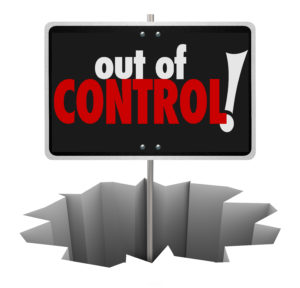“There’s other ways to deal with violent behaviors or misbehavior outbursts than restraint.” This comment was made by a criminal justice professor who is also a licensed psychologist in response to the 13-year-old boy with autism who died after he was restrained by school staff. I am always amazed at the comments people make when they have absolutely no idea what we, as special education teachers, deal with. I am by no means defending what happened to this 13-year-old boy. My prayers go out to the family. I am by no means defending what the school staff did, because what they did somehow led to the death of this 13-year-old boy with autism. My prayers go out to them as well. What I am defending is the use of restraints. As much as one might not like restraints, there are times when restraints are necessary. That is one of the reasons why Governor Brown signed a bill in October of 2018 limiting – but not outright banning – restraints in schools. There is a reason why restraints were not outright banned, because, like it or not, restraints are sometimes necessary.
Why, you might ask, are restraints even necessary? Picture this. A classroom… with one teacher, two para-educators, and twelve students, ages 9 to 13. Out of the twelve students, 8 were in wheelchairs (none of them could push themselves), 2 could walk with staff assistance, and 2 were independent walkers. Michael (not his real name) was autistic and ambulatory. When Michael became agitated, he became physical. It usually started with throwing whatever was in his hands, then progressed to whatever was within hands reach: chair, desk (yes, he picked up a desk and threw it), table (yes, he toppled over a table after he realized he could not throw it), books, toys, etc. He even tried to throw a television and a wheelchair. When he exhausted all of the above (and sometimes before he exhausted all of the above), his focus became us and the other students in the classroom. Yes, he would go after us and the other students: hitting, pulling hair, punching, slapping, pinching, head-butting, biting, kicking, and the wheelchair I mentioned that he tried to throw had a student in it!!!
The above scenario, was my reality for the two years we had Michael. He was the sweetest kid and smart. But, like a lot of kids with severe autism, he had behaviors and a tendency for outbursts like the above. Sometimes the outbursts were predicted, other times they were not. Sometimes we could bring him down, other times we could not. He, unfortunately, was a danger to himself, the other students in the classroom and to us. It took a long time, a lot of different behavior programs, a 1:1, and evacuation strategies that did not work before we even went with restraining Michael. But, after having every single one of our students and staff hurt by Michael in some form or fashion (some injuries were pretty severe), restraint became necessary, our absolute last resort. I am not the only teacher, and my classroom is not the only classroom that has dealt with, is dealing with, and will deal with students who engage in violent outbursts. And, because of that, restraints continue to be necessary.
But, along with the necessity for restraints, is the necessity for proper training, education, a clear understanding of the use of restraints, a clear understanding of the effects of restraints, when to use them, how to use them, and who can use them. Part of my training involved hands on use of restraints on each other, and boy, was it a wow moment for me!!! My teacher called it sensitivity training in administering restraints… and it worked! The proper use of restraints is not a form of punishment, it is a measure for safety. Every effort should be made to prevent the need for the use of restraints. But, when a student’s behaviors pose danger of serious physical harm to self, and/or others, then the use of restraints are appropriate.
As an educator, my first responsibility is to ensure a safe and healthy learning environment for ALL of my students, my para-educators, and myself. All of my students have the right to go home the way they came to school; without bruises, black eyes, bite marks, broken glasses, scratches, cuts, broken arm, and a bald spot from hair pulling (just to name a few) from another student. All of my students have the right to feel safe and secure during the school day. All of my student’s parents have the right to feel good sending their students to school, not wondering and worrying about whether they are going to get hurt or not. And, if restraining a student has to happen to ensure the safety and well-being of the rest of my other students… than by all means, I will restrain!


